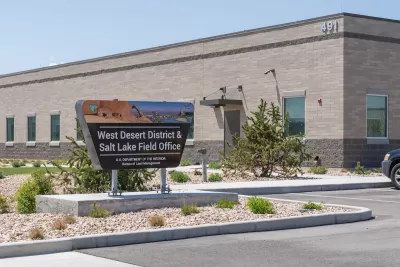The U.S. owns more than 650 million acres of public lands, and it has the power to sell or lease limited parcels for affordable housing. But mass disposal of public lands, as some legislators have proposed, is not the answer.

As housing costs soar in Western communities, public lands could offer a solution for creating affordable housing while preserving outdoor spaces. But first, we must protect these lands from privatization efforts.
Mark Allison of New Mexico Wilderness Alliance explains how federal land management agencies already have tools to help address the housing crisis. For instance, The Bureau of Land Management recently sold 20 acres of public land to Clark County, Nevada. The county is using the land to build 200 affordable homes. And Summit County, Colorado, partnered with the U.S. Forest Service to lease land to build 162 income-restricted rental units.
However, these opportunities face threats from privatization campaigns. Utah's governor recently sued to force federal “disposal” of public lands, while additionally proposed legislation would make it easier to sell public lands to private developers by counting them as having no value in federal budgets.
Allison argues that strategic use of the U.S.'s 650 million acres of public lands could help create affordable housing in high-cost Western communities without sacrificing the outdoor access that makes these places special. The key is using existing federal tools to identify appropriate parcels for development while conserving others.
FULL STORY: Public Lands Can Help Us Tackle the Housing Crisis in the West

Planetizen Federal Action Tracker
A weekly monitor of how Trump’s orders and actions are impacting planners and planning in America.

Congressman Proposes Bill to Rename DC Metro “Trump Train”
The Make Autorail Great Again Act would withhold federal funding to the system until the Washington Metropolitan Area Transit Authority (WMATA), rebrands as the Washington Metropolitan Authority for Greater Access (WMAGA).

The Simple Legislative Tool Transforming Vacant Downtowns
In California, Michigan and Georgia, an easy win is bringing dollars — and delight — back to city centers.

The States Losing Rural Delivery Rooms at an Alarming Pace
In some states, as few as 9% of rural hospitals still deliver babies. As a result, rising pre-term births, no adequate pre-term care and harrowing close calls are a growing reality.

The Small South Asian Republic Going all in on EVs
Thanks to one simple policy change less than five years ago, 65% of new cars in this Himalayan country are now electric.

DC Backpedals on Bike Lane Protection, Swaps Barriers for Paint
Citing aesthetic concerns, the city is removing the concrete barriers and flexposts that once separated Arizona Avenue cyclists from motor vehicles.
Urban Design for Planners 1: Software Tools
This six-course series explores essential urban design concepts using open source software and equips planners with the tools they need to participate fully in the urban design process.
Planning for Universal Design
Learn the tools for implementing Universal Design in planning regulations.
Smith Gee Studio
City of Charlotte
City of Camden Redevelopment Agency
City of Astoria
Transportation Research & Education Center (TREC) at Portland State University
US High Speed Rail Association
City of Camden Redevelopment Agency
Municipality of Princeton (NJ)





























